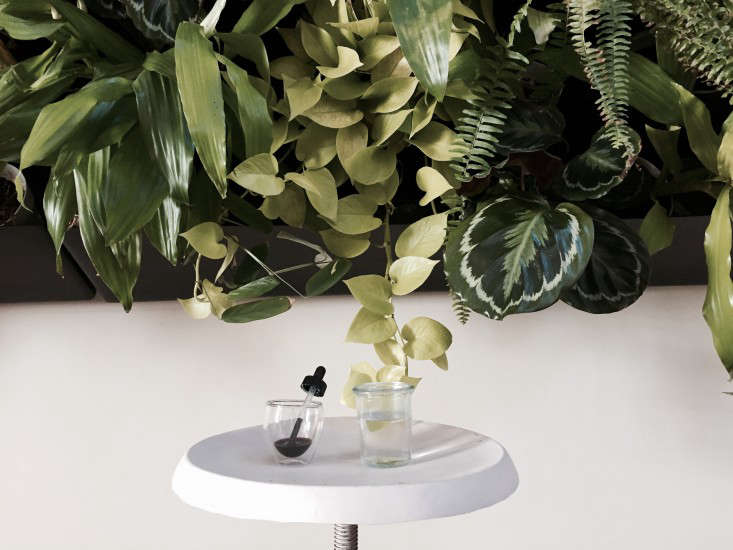Sea kelp is a superfood for humans and plants too. It’s packed with 70 micronutrients and among them is cytokinin, a growth hormone that promotes healthy roots. As a gardener with an indoor living wall–with many pots of puny plants–I was intrigued. Was this the cocktail my nine rows of pots needed to be happy?
Tom Schreiber, the chief executive of organic sea kelp fertilizer maker Organics Rx, sent me a sample the other day, promising that the before-and-after results would impress me. For a plant that’s fertilized with sea kelp, it feels “like drinking from a coffee stirrer, and switching to a straw.”
How did my plants respond to sea kelp fertilizer? For the results, read on:

Above: My vertical garden, which you could say is alive in spite of me. Photograph by Cheryl Locke.
We have a rocky history, my vertical garden and I. Since installing it three years ago, my husband and I have alternately doused and drowned it. We attempted a disastrous wicking system. Tried ice cubes and misting. Raided our nursery for various sticks and slow-release balls.
In the end, we decided to submit to the tedium of hand watering all 100-plus pots, every weekend. They have returned the love by not dying. Thank you, nature.

Above: Photograph by Kqedquest.
Sea kelp is an organic source of plant food with more than 70 micronutrients. When used on plants, it promotes foliage and blooms, enlarges chloroplasts, and optimizes cell processes. See Erin’s story Seafood for the Garden on how to harvest and make your own kelp fertilizer.
Above: Schreiber sent me a bottle of Sea-Kelp 100 (a 32-ounce bottle is $11.99 at Amazon).
For the past two weeks, I have been making kelp tea –consisting of two tablespoons of sea kelp extract and a gallon of water–and dunking our pots in a bucket of it.
And so far? My wall has been perking up–especially the ferns.
Dunking plants in a bucket also aerates the soil and gives them nice, even moisture. (My husband and I are now working on how not to make a mess while doing this.)
Taking care of plants is a long game, and I’ll report back on the long-term effects of sea kelp fertilizer. In the meantime, if you’re looking for ways to keep your plants happy, here are more sections to browse:
Finally, get more ideas on how to plant, grow, and care for various houseplants with our Houseplants: A Field Guide.











Have a Question or Comment About This Post?
Join the conversation